History
Welcome to the heart of the Historical Calling Lake website.
Click on any segment to enter a suite of rooms in our house of history.
Over time, as people share what they know, the rooms will fill with pieces of the puzzle that help us understand how and why this beautifully situated northern Alberta community has attracted First Nations and Métis peoples, settlers and cabin dwellers from neighbouring communities and beyond. If you have stories, photos, artifacts, corrections or anything else to offer, please contact the Calling Lake history team.
Indigenous beliefs and practices predate all other expressions of faith in Calling Lake, and continue to be practiced. As traders and settlers came north, Catholic, Protestant and Mennonite missions added to the mix.
Land Acknowledgement
Recognizing that we are all equally responsible to know our shared history and journey forward in good faith, we acknowledge with respect that Calling Lake stands on land, and alongside water, where Indigenous peoples have gathered, hunted, fished and held ceremonies from time immemorial.









